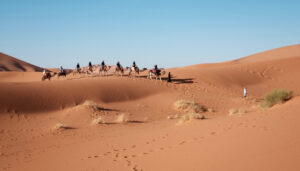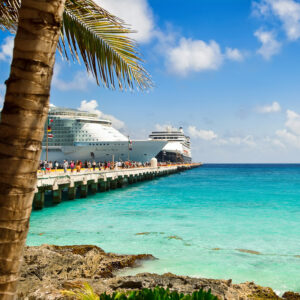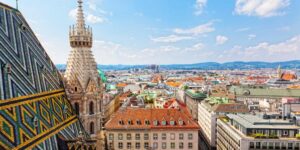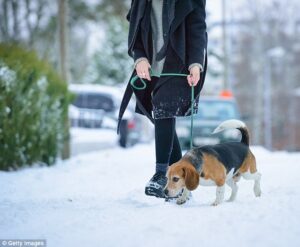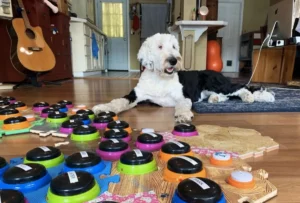ROAD TRIP THROUGH AUSTRIA
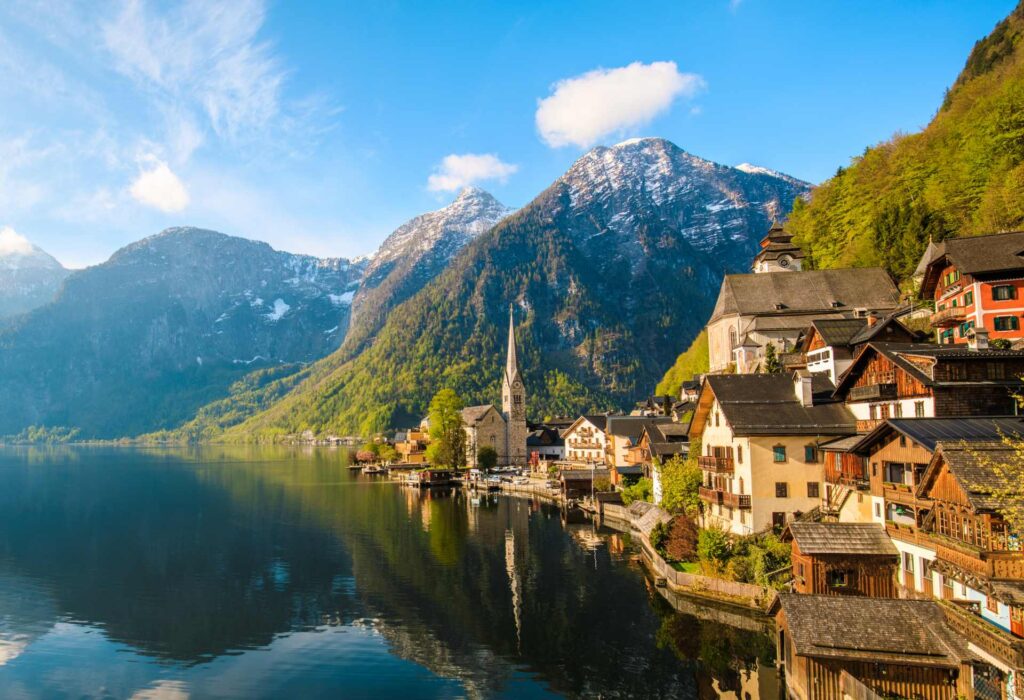
Scenic nature landscape view of Hallstatt mountain village reflecting in Hallstatter see lake against The Austrian Alpines in with morning sunshine and beautiful blue cloudy sky looking like a postcard picture in Salzkammergut region, Austria xxxl size april 2017
It’s almost midnight when we make our way toward St. Stephen’s Square, my heels clicking on the deserted cobblestone streets of Vienna. It’s a walk I’ve made hundreds of times before, long ago, yet my heart speeds up in anticipation.
St. Stephen’s Cathedral is the heart of this Austrian capital, and it was here that I first fell in love with this German-speaking city. Dating to 1147, the church has prevailed through wars, invasions and fire to become a symbol of Vienna. It’s been so long since I’ve seen this landmark.
Finally, the lit spires of the Gothic cathedral come into view, and I find that we are not alone. Others are drawn to the church, even at midnight. The outdoor würstel stand next to the cathedral is still serving up beer and brats in the cool night air. It smells inviting, so we join the queue to buy our own.
It’s been some 20 years since I lived in Austria. I was a naive Colorado girl on a year of study abroad, and my culture shock was overwhelming. But over time, the culture that seemed so strange eventually became my norm, and the Austrian dialect that was once only noise cleared to become words of my own.
And even though life has marched on for me since then, this land has never stopped being a part of me. That’s why I’m here—I have 10 glorious days to revisit my favorite places in Austria.
It’s time for an Austrian road trip.
For me, all visits to Austria must start in Vienna. Once the imperial home of the Habsburgs, the royal family whose powerful fingers reached into places like Budapest and Prague, the city still retains its regal air and high-class ways.
Remnants of that royal past are everywhere, from the special desserts made for royalty (try the Sacher Torte) to the beautiful palaces still lovingly cared for.
It’s my sweetheart’s first visit to the city, and there’s so much I want to show him. Our first stop is Schönbrunn Palace. The stately yellow-hued summer palace and gardens were completed in 1683. Its most famous residents were Empress Maria Theresa and her 16 children. Today, the palace is a museum and garden.
The palace has 1,441 rooms, and many are open to the public. A small train takes visitors around the gardens and past the palace zoo. My favorite part of our visit is standing tall on the glorietta and looking out over Vienna. We sit on the stairs and I point out some of the town’s highlights—the Danube, which winds through town, and the Prater, Vienna’s famous amusement park.
Finally, it’s time to head to my next favorite royal attraction—Belvedere. These two Baroque palaces in the 3rd District house revolving art exhibitions, but I love them for their gorgeous palace gardens. The statuary alone is worth the visit. We spend a few hours wandering and taking photos before heading to dinner.
Every city has its favorite dishes and cuisine. In Vienna, one of those dishes is wiener schnitzel, breaded veal cutlet. Figlmüller (Wollzeile 5, Vienna, Austria 1010) claims to serve the biggest schnitzel in the city—and they’ve been doing it since 1905. The schnitzel here is so thin and big that it overlaps the plate. It’s served with lemon wedges and a dish of potato and cucumber salads. Yum!
Another Viennese mainstay are the Heurige, the town’s beloved wine taverns. Vienna is one of the few national capitals with vineyards inside the city limits. And while Austrian wine is rarely found on the international market—most is consumed in Austria—it’s the mainstay here. We spend an evening with good friends savoring the hearty bar food—würstel, salads, potatoes and thick bread—in the cozy atmosphere. A musician plays the accordion, and our waitress, clad in a traditional dirndl, brings glass after glass of Austrian wine.
Time goes so fast when you’re having fun, and soon it is our last day in Vienna. But there’s one more Viennese experience I want to savor—an afternoon in a traditional coffeehouse. Coffeehouses are everywhere, and they are the living rooms of Vienna. Coffee here is served with style and flair, and a coffeehouse visit can last for hours.
Things change, it seems, even in Vienna. Coffeehouses here have gone non-smoking, a change I relish as I sip my rich Melange.
It’s hard to say goodbye to Vienna and my friends here, but we still have a lot to explore. The tiny key-shaped country of Austria holds many wonderful destinations, and we have time to visit three more of my favorite places.
Salzburg, Austria
The first stop is Salzburg. It’s just a three-hour drive from Vienna to the town that was made famous in “The Sound of Music” movie. Where Vienna is regal and sophisticated, Salzburg is small and charming. Tucked along the banks of the Salzach River on the northern boundary of the Alps, Salzburg was once its own country. Its most-famous resident was composer Wolfgang Amadeus Mozart.
You can’t visit Salzburg without walking in the musician’s shoes. We visit his birthplace (now a museum) and the house where he grew up (also a museum). We eat chocolate with his namesake (Mozart Kuguln), and see the gravestones of his relatives in St. Peter’s Cemetery and St. Sebastian’s Cemetery.
After our Mozart-fiesta, we decide to do something different. We had purchased the very worthwhile Salzburg Card, which allows visitors to pay just one price and gain entry to as many listed attractions as possible in 24-, 48- or 72-hour periods.
So we pore through the list and decide on Hellbrunn Palace. Built in 1613-1619 by the Prince-Archbishop of Salzburg, it is a beautiful Baroque villa. At first, it seems like just another beautiful palace—but then we see the trick fountains. Prince-Archbishop Markus Sittikus was quite a jokester and loved getting a laugh. He designed trick fountains and even puppet theaters powered by water throughout the grounds. And, it seems, he was successful—we laugh throughout our entire visit, even all these years later.
Our favorite experience, though, is a Mozart concert in the Festung Hohensalzburg, the ancient fortress that sits high on the hill overlooking town. The concert venue is small—only 200 people in a warm room in the fortress—and there are only five musicians. Yet it’s spellbinding to listen to the music of a master performed in the ancient city he once called home.
As for me, I am almost giddy when we head back to our hotel after the concert. It’s midnight, and the fortress and churches in town are lit up beautifully. We stroll lazily through Salzburg’s charming Old Town District, its narrow cobblestone streets lined with homes that go back for centuries. It’s hard not to fall under Salzburg’s charm, so I don’t even resist. Once again, I’m completely taken with her.
If Salzburg is a small town, Hallstatt is a tiny village. Less than 800 people live in this Iron Age town tucked alongside Lake Hallstatt. Less than an hour’s drive from Salzburg, the village sits on a tiny strip of land between the water and the mountain. Indeed, homes and even a church are built into the hill. Some residents walk up more than 100 steep steps to get to their homes each night.
Hallstatt’s street are small and narrow, built long before cars were even imagined. Drivers park at one of the town parking lots and walk into the village. Hallstatt is picture perfect—a small town square surrounded by tidy homes with colorful flower boxes, narrow streets lined with bakeries and shops, and two small churches, one Catholic and one Protestant.
Some 7,000 years ago, people discovered salt in the mountains, and the area has been inhabited ever since. This rich heritage makes Hallstatt a UNESCO World Heritage Site. But salt or not, I can understand why people have been drawn here. There is something charmingly simple and sweet about life on the lake, so isolated from everything else. Maybe that’s why I’m drawn here again and again.
After a leisurely day of exploring town, we take the funicular up the mountain for the salt mine tour. Yes, they still mine salt in Hallstatt, and the tour is fun and entertaining. Afterward, we forego the funicular and hike down the mountain. A steep, yet well-maintained trail winds down the hill, and we stop often to soak in the picturesque views of the lake and tidy town below.
Tiny though it is, Hallstatt offers a well-polished tourism experience. The restaurants are small, but excellent. It’s our hotel, though, that thoroughly surprises me. The last time I was in Hallstatt, the buildings that have now become Heritage Hotel Hallstatt sat in disrepair.
Through the loving efforts of the community, three historic buildings have been transformed into a world-class hotel. With an enviable location right on the lake, Heritage Hotel Hallstatt offers four-star luxury with flairs of elegant Scandinavian design. Each of the 12 suites and 42 double rooms are large and elegantly appointed. I was so comfortable here that I didn’t want to leave. But time was marching on, and we had one more Austrian destination to visit.
Klagenfurt, Austria
Truth be told, I’ve never spent much time in Carinthia, Austrian’s southernmost state, so I’m eager to see it. Tucked within the Eastern Alps, Carinthia is best known for its mountains, lakes and rural heritage. The region is popular with Europeans, who come to visit the high-class spa resorts in Villach and frolic in alpine lakes like Wörthersee and Millstätter See, but very few North Americans know of the region.
The lake season has ended by the time we roll our car into Villach. The high-end spas, restaurants and lakeside patios are empty; the luxury resorts in winter mode. But we can imagine the pools filled with suntanned Europeans, sipping their drinks and relaxing in the sun. I’ll have to come back to visit.
I’m eager to see the everyday part of Carinthia, so we head the car to its capital—Klagenfurt. With some 90,000 residents, it is the sixth-largest city in the country. The dialect here is different and harder for me to understand. A Slovene-speaking minority adds flair to the local culture, and I can hear some of these new words.
Like most Austrian towns, Klagenfurt is tidy and neat. The city’s heart is the town square, which is home to the famous Lindwurm of local lore. Legend says that the city was founded when several brave men killed a terrible dragon—a Lindwurm—in the moors across the lake. A statue to that lore is the centerpiece of the town square.
Our first stop is for some traditional Carinthian lunch and local beer at the famous town pub, Bierhaus zum Augustin. Our appetites sated, we take a walking tour of town, stopping to see the Carinthian Modern Museum of Art.
Since the weather is still nice, we head to the Gustav Mahler Composing House, located in a forest at the edge of town. The leaves crunch under our feet as we walk through the trees before reaching a tiny, one-room house. Although I’d heard of the famous composer, of course, our visit introduces us to more of Mahler’s works and his life. It is moving to listen to his music booming from the little house in the otherwise quiet woods.
All too soon, it is our last day in Austria. We decide to do something completely different, and head to Minimundus. This family-friendly park is home to more than 150 miniature models of famous buildings from all over the world. Each model has been accurately re-created, and the attention to detail is amazing. We delight over the Taj Mahal, the Tower of London and Sydney Opera House.
Then we turn down the “American” aisle to find the White House, the Space Shuttle launch pad, New Orleans and even the Statue of Liberty.
Right before we leave, we make one last discovery—a perfect re-creation of Mesa Verde, the ancient Anasazi ruins in our own home state of Colorado. It’s touching to find this little piece of home so lovingly represented here in Austria, and I can’t help smiling as we head out.
